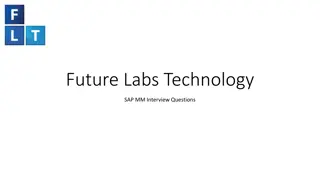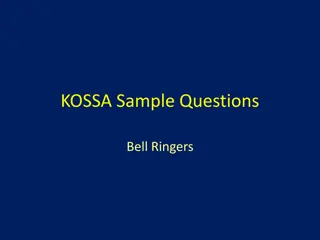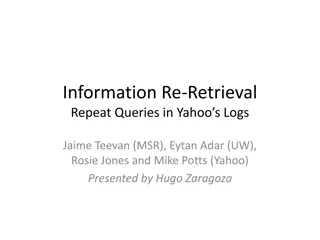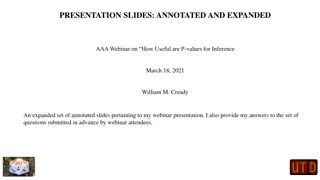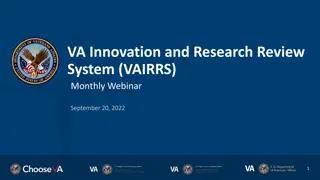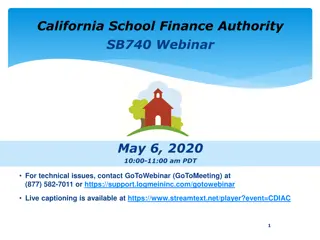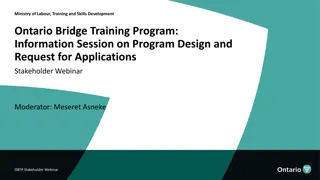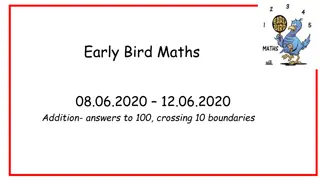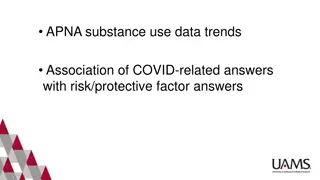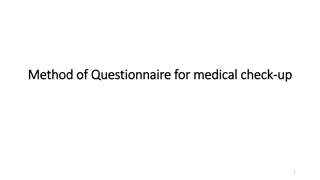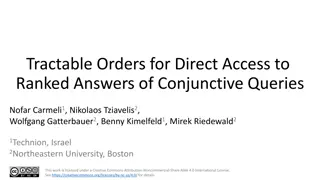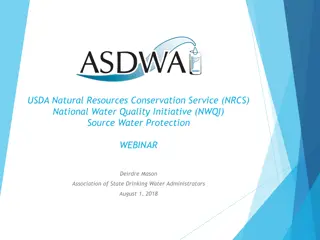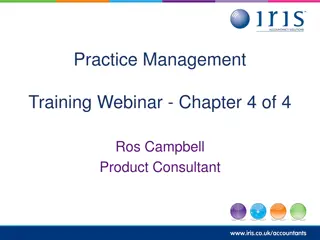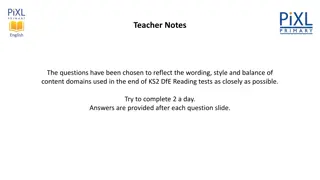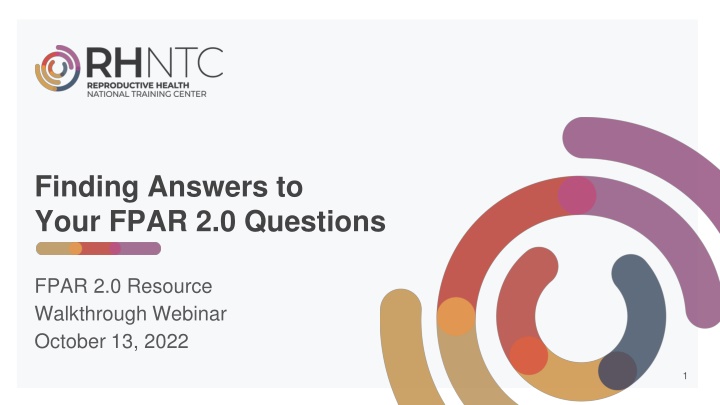
FPAR 2.0 Resource Walkthrough: Finding Answers & Learning Objectives
Explore a comprehensive resource walkthrough on FPAR 2.0, learning where to find guidance, investigating answers to related questions, and identifying practical applications. Discover case examples, security concerns, de-identification methods, and more to enhance your understanding.
Download Presentation

Please find below an Image/Link to download the presentation.
The content on the website is provided AS IS for your information and personal use only. It may not be sold, licensed, or shared on other websites without obtaining consent from the author. If you encounter any issues during the download, it is possible that the publisher has removed the file from their server.
You are allowed to download the files provided on this website for personal or commercial use, subject to the condition that they are used lawfully. All files are the property of their respective owners.
The content on the website is provided AS IS for your information and personal use only. It may not be sold, licensed, or shared on other websites without obtaining consent from the author.
E N D
Presentation Transcript
Finding Answers to Your FPAR 2.0 Questions FPAR 2.0 Resource Walkthrough Webinar October 13, 2022 1
After use and/or participation, the learner will be able to: Learning Objectives Know where to go to review the FPAR 2.0 information and guidance that is available Investigate answers to questions that arise related to FPAR 2.0 Identify one or more applications for this information 3
How familiar are you with the FPAR 2.0 guidance available? Poll Question 4
Case Examples: FPAR 2.0 Questions and Where to Find the Answers 5
Case One 6
Case Example: We have security concerns, including submission of protected health information (PHI) like date of birth. 7
Where should we turn in order to answer questions about security practices? It is important to note that Title X is among a number of federal programs that collect encounter- or patient-level information and that there are regulations and standards about how that information is collected, handled, and maintained. The FPAR 2.0 system will comply with applicable HHS and federal regulations through completion of the HHS Enterprise Performance Life Cycle Framework, including the Authority to Operate (ATO) process with cybersecurity and privacy review controls. Refer to the IHE IT Infrastructure White Paper for more detail on the data anonymization process for FPAR 2.0. 8
What methods are used to de-identify encounter-level data elements? Appendix A of the white paper spells out how specific data elements are de-identified from the original file submitted by grantees. Four general methods of de-identifying encounter-level data elements are described: 1. mapping direct identifiers to random values 2. recode or quantize potential indirect identifiers 3. clip extreme outliers in data 4. redact sensitive data 9
Where should we turn to determine what is required for the birthday? Grantees should report actual date of birth, whenever possible. FPAR 2.0 Frequently Asked Questions provides this additional information: OPA will not have access to birth dates. OPA will only have access to summarized, de-identified data (such as age instead of date of birth). The FPAR 2.0 system will convert dates of birth to an age. It will also assign age 50 to all clients 50 years and older. If a grantee is prohibited from sharing an exact date of birth, please submit the actual birth year and June 30th, for example 2000-06-30 or 1992-06-30. FPAR 2.0 | Valid Values And Sample Files Valid Values file specifies that "If grantee is prohibited from sharing exact date of birth, submit actual birth year and June 30th (for example, 2000-06-30 or 1992-06-30)" 10
What is the exact point at which identifiable data will be destroyed? Is it right after a file is uploaded and de-identified? Or is it longer? FPAR 2.0 Implementation Guide: Beginning on Page 7, the data security plan is outlined, with data anonymization covered on pages 8 9. In short, the FPAR contractor will access the submitted data through the FPAR 2.0 submission portal, and will de-identify the data using algorithms and methods approved by the National Institute of Standards and Technology. The FPAR contractor will destroy the original data submitted by grantees within one year of submission to FPAR 2.0. The FPAR contractor will securely store de-identified data for data quality and historical comparison purposes. Additional information can be found under Data Privacy heading in FPAR 2.0 Frequently Asked Questions. 11
Case Two 12
Case Example: Concerns about multiple responses What about responses that can change or where multiple options are relevant? 13
How do we determine which response(s) to submit? Submit the response that is true and most relevant at the time of the encounter; the response that most closely maps with the client s response or information. The Forms and Instructions contain guidance describing the intent of each FPAR table, and therefore may help you identify the most appropriate responses to report. The FPAR 2.0 system will accept multiple responses for race, and only one response per encounter for all other data elements. See the Encounter Level Sample File on OPA s FPAR 2.0 page, which includes sample data. For more information, review the Data Elements section of FPAR 2.0 Frequently Asked Questions. 14
Case Three 15
Case Example: Where do we turn for system requirements? How can we ensure that selection options and other components of our system aligns with what is required for FPAR 2.0? 16
Collecting and reporting tobacco use/ smoking status Per Data Elements file: Tobacco smoking status represents a person's smoking behavior. Smoking statuses can be classified as current everyday smoker, current some day smoker, former smoker, never smoker, smoker current status unknown, unknown if ever smoked, current heavy tobacco smoker, and current light tobacco smoker. These statuses represent CDC-specified responses for recording smoking status. So, the ideal approach is to change the responses a client can report to align with these options. Refer to the Valid Values file for what exactly those values are and whether the field is required. Another option is for grantees and subrecipients to come together to agree on definitions, and when all agree, answers can/should be recoded to the smoking statuses listed. 17
We can generate a CSV of encounter-level information can we submit this? Yes, CSV is a file type that can be submitted. Fields in your file must align with FPAR 2.0 data elements. The system will prompt you to map fields in your file to fields in FPAR 2.0 during the submission process. There is a published sample CSV file-layouts and other supplementary TA materials on the Family Planning Annual Report (FPAR) 2.0 | HHS Office of Population Affairs page. More information can be found in the following: Page 2 of this FPAR 2.0 Reporting Updates Valid Values and Sample Files on this page. 18
What materials that we have referenced will you review following this webinar? Discussion Question
Q&A What questions do you have for us? 20
How to Engage with Us Subscribe to the RHNTC monthly eNewsletter at rhntc.org/enewsletter Contact us on rhntc.org Follow us on Twitter @rh_ntc Subscribe to the RHNTC podcast podcast.rhntc.org Sign up for an account on rhntc.org 21
rhntc.org THANK YOU! Please fill out the evaluation form after the webinar! CONTACT US rhntc@jsi.com This webinar was supported by the Office of Population Affairs (Grants FPTPA006030, TPSAH000006) and the Office on Women s Health (Grant ASTWH2000-90-01-00). The views expressed do not necessarily reflect the official policies of the Department of Health and Human Services; nor does mention of trade names, commercial practices, or organizations imply endorsement by the U.S. Government. 22

